The bamboo bridge across the Nhung River connecting Rao and Phuoc hamlets is about 70 - 80m long - Photo: D.V
Danger lurks
On a hot summer afternoon, Mrs. Ho Thi Thu, (82 years old) in Rao hamlet, went to the bank of the Nhung River where there is a bamboo bridge to sit and enjoy the cool breeze. Despite her advanced age, Mrs. Thu is still clear-headed and clearly understands the stories of her village. She said that since the liberation of her homeland, people on both banks of Rao hamlet and Phuoc hamlet have voluntarily contributed labor, bamboo, and wood to build a bamboo bridge across the Nhung River for travel.
“Back then, we had just come out of the war, there were no roads and bridges like there are now, so the villagers could only join hands to build a bamboo bridge to cross the river for production and to visit relatives. Up to now, after 50 years, people still continue to use this bamboo bridge for daily travel. The only difference is that before, the Nhung River was narrow so we had to build a short bridge, but now the landslide has widened the river so we have to build a bridge 70 - 80 m long to connect the two banks,” Ms. Thu said.
Before, her legs were still strong, and almost every day Mrs. Thu crossed the bamboo bridge to go to work in the fields or visit her neighbors on the other side of the river. But in the past few years, she has not dared to cross the bridge anymore because her health has gradually deteriorated.
Mr. Nguyen Cuoi, (50 years old) slowly walked on the bamboo bridge from Rao hamlet back to Phuoc hamlet after his regular work day. Holding his helmet in one hand, holding onto the bamboo bridge, Mr. Cuoi said tiredly: “I am a construction worker, my house is in Phuoc hamlet. This morning I left my motorbike here to go to Rao hamlet to dig the foundation to build a mausoleum for someone.
Although he often crosses bamboo bridges, he is still afraid of danger, especially during the rainy and flood season. Although he is good at swimming, Mr. Cuoi once almost died while crossing a bamboo bridge. That was about 10 years ago, in July, the storm and flood season, Mr. Cuoi was returning home from work as usual. That day, it was pitch dark, and he groped his way across the bamboo bridge to get home.
“You know, the Nhung River is narrow but short, steep, deep and the flood water rushes in very quickly. At that moment, when I was halfway across the bridge, I heard the water rushing and I fell into the river. But luckily I grabbed onto a bamboo bush close to the bank and crawled up, narrowly escaping death. Thinking back, I am still scared,” Mr. Cuoi recalled.
According to Mr. Cuoi, there have been many cases of people falling into the river while crossing the bamboo bridge, including about 5 years ago, a male student about 8-9 years old went to his grandfather's house in Rao hamlet to play and unfortunately fell into the river and drowned. The need for people to cross the river between the two hamlets is very urgent and legitimate, so despite knowing the danger, for decades people have chosen to cross the river by bamboo bridge.
Wish for a solid bridge
Mr. Cuoi said that his family has 6 sao of rice fields and some crop areas on both sides of the Nhung River. Because of the “river barrier”, transporting fertilizer, seeds, and agricultural tools for production is extremely difficult, especially during the harvest season. “My family, like dozens of other families, have to take a very long detour during the rice and crop harvest season.
For example, harvesting rice on the northern bank of the Nhung River, if we go along the bamboo bridge, it would only take about 1 km, but due to the distance, we have to transport the rice through Hai Thuong commune road, going up to National Highway 1, a distance of more than 10 km, to bring the rice home in Rao hamlet. It is very hard, inconvenient and costly. We villagers hope that the State will pay attention to building a bridge for people with a width large enough for a trailer to pass through, so that it can serve some farming tasks and make travel more convenient and safe," Mr. Cuoi expressed his wish.
Living right next to the bamboo bridge, Mr. Hoang Viet Ha has witnessed many times the scene of the bamboo bridge being washed away due to heavy rain and floods as well as many cases of people unfortunately falling into the river. “In September and October, when the flood comes, the bridge is washed away, and near Tet, people rebuild the bridge. In February and March, if there is continued heavy rain and strong water, the bridge will be washed away again, and people will continue to rebuild it.
In general, this bridge is very important to the people here, so even though it sometimes falls down every year, the people still try to rebuild it together," said Mr. Ha. Ms. Ho Thi Thu An, Head of Mai Dan village, said that Rao hamlet on the south side of the Nhung river has 42 households and Phuoc hamlet on the north side of the river has 74 households. Thus, hundreds of people on both sides of the Nhung river have to cross the bamboo bridge every day.
According to Ms. An, during the rainy season, floods in the Nhung River bring a large amount of moss and trash, causing the bamboo bridge to drift away 2-3 times a year. After each time the bridge drifts away, the cooperative and the village management board support the cost along with contributions of bamboo, cajuput trees, areca trunks and the people's labor to rebuild the bridge. On average, each time a new bridge is built, it costs 3-4 million VND. The current bridge, with many bamboo trunks still fresh and growing leaves, will be rebuilt by the people at the end of 2024.
“This bridge practically serves the people of the two hamlets in terms of traveling and trading as well as rice and crop production. People in Rao hamlet grow rice on the north side of the Nhung River while people in Phuoc hamlet grow crops on the south side of the river. The local government and people really hope that the higher authorities will pay attention and research to invest in building a more solid bridge to replace the current temporary bamboo bridge, which is potentially dangerous, to help people travel and produce safely,” Ms. An suggested.
German Vietnamese
Source: https://baoquangtri.vn/nguoi-dan-phai-qua-ve-song-nhung-tren-cau-tre-tam-bo-suot-50-nam-193732.htm


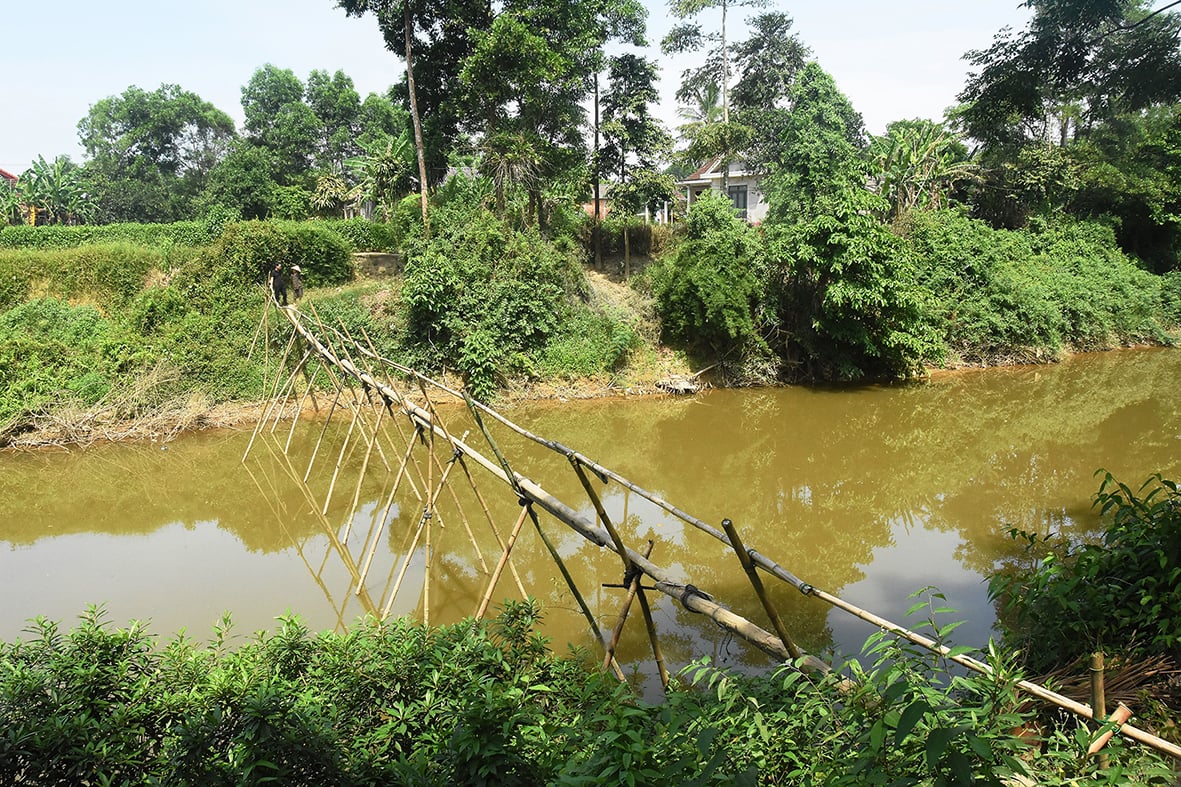
![[Photo] Prime Minister Pham Minh Chinh attends the groundbreaking ceremony of Trump International Hung Yen Project](https://vphoto.vietnam.vn/thumb/1200x675/vietnam/resource/IMAGE/2025/5/21/ca84b87a74da4cddb2992a86966284cf)
![[Photo] Scientific workshop "Building a socialist model associated with socialist people in Hai Phong city in the period of 2025-2030 and the following years"](https://vphoto.vietnam.vn/thumb/1200x675/vietnam/resource/IMAGE/2025/5/21/5098e06c813243b1bf5670f9dc20ad0a)
![[Photo] Prime Minister Pham Minh Chinh receives Rabbi Yoav Ben Tzur, Israeli Minister of Labor](https://vphoto.vietnam.vn/thumb/1200x675/vietnam/resource/IMAGE/2025/5/21/511bf6664512413ca5a275cbf3fb2f65)


![[Photo] Determining the pairs in the team semi-finals of the National Table Tennis Championship of Nhan Dan Newspaper](https://vphoto.vietnam.vn/thumb/1200x675/vietnam/resource/IMAGE/2025/5/21/eacbf7ae6a59497e9ae5da8e63d227bf)
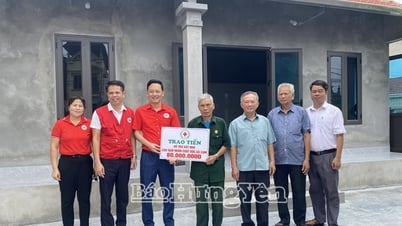












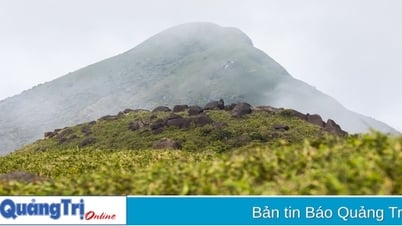
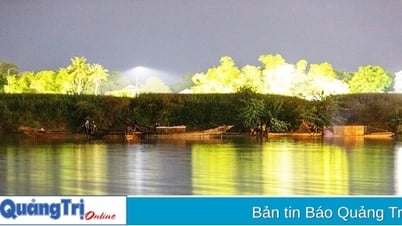



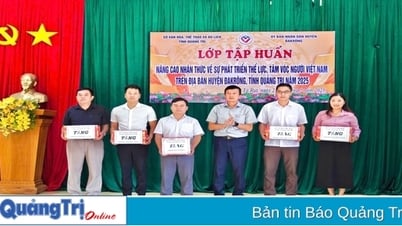













































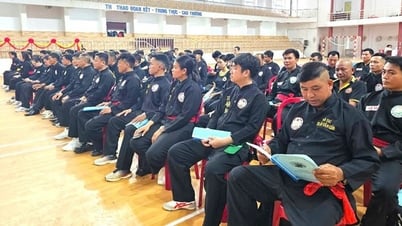

















Comment (0)